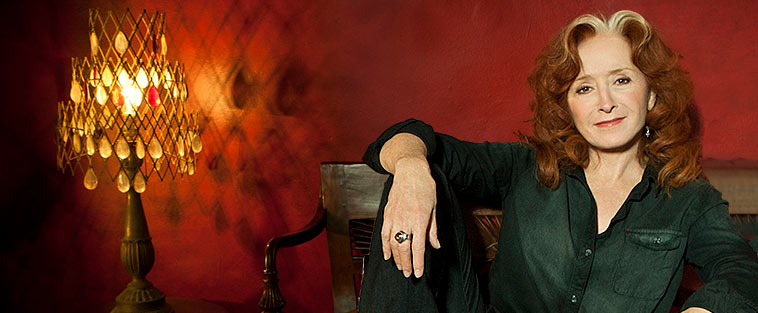
August at Ravinia has seen a number of high-profile artists and happenings which our fantastic audience graciously documented through social media. Below are some of our favorite moments from the end of Ravinia's 2016 season.

Because I was a still very young, I chafed at the appropriation of harpsichord music by pianists—especially since I was studying harpsichord—and it seemed rather obvious to me that one ought to perform music on the instrument for which it was composed. This was the bedrock assumption of the “original instrument” school of “authentic” performance practice, which was just beginning to go mainstream at the time and which today dominates the field of Baroque music performance. What I’ve learned since then, however, is that the whole subject is far more complex than it first seemed to me.

Regardless of the genre they ultimately become associated with, most musicians worth their salt can cite a varied list of influences that helped create the performer they’ve become. And surely Bonnie Raitt’s list is as eclectic as they come.
“Any artist should be so lucky to have one song in their career that people still want to hear,” singer-musician Seal intoned in a 2015 interview with Details magazine.
He was, of course, speaking of “Kiss from a Rose,” the multimillion-selling, triple Grammy-winning pop hit from the soundtrack of the 1995 film Batman Forever that changed his life.

Before Andy Grammer made his national debut in 2011, the singer/songwriter/multi-instrumentalist was at turns getting a crash course on entertaining a crowd from his father, Red Grammer (a Grammy-nominated children’s recording artist), or busking on the streets of Santa Monica, hoping to be discovered. And once he was, the floodgates of fame flew wide open, from the platinum-selling smash “Keep Your Head Up” and its equally contagious follow-up “Fine by Me,” to tour dates alongside Train, Gavin DeGraw, Colbie Caillat, Plain White T’s, Natasha Bedingfield, Mat Kearney, and Parachute, among others.

An hour’s conversation with Ksenija Sidorova flies right on by. The comely, Latvian-born accordion virtuoso may be a darling of the contemporary classical music industry, with appearances in A-list concert halls and, as of this year, a lucrative recording contract with Deutsche Grammophon to her credit, but she is also a refreshingly down-to-earth charmer.
It happens all the time. A famous, beloved artist falls ill (or, as is sometimes the unpleasant case, gets what may be regarded as a better offer). It even happens at Ravinia. A famous, beloved artist cancels, and management scrambles for an appropriate replacement.
Some cases become memorable, star-making events. Other cases are quickly, even mercifully, forgotten.
Tito Puente, one of the most influential Latin artists in history, made his Ravinia debut 20 years ago with a plethora of his best Latin jazz contemporaries, including Eddie Palmieri, Poncho Sanchez, Arturo Sandoval, and David Sanchez.
If you couldn’t be there in person, which is always Plan A, by now you have heard about the night of July 23, 2016 at Ravinia. And if I have my say, you will hear about it again. James Levine returned to Ravinia for the first time since 1993. And the gods seemed to herald his triumph with the thunder and lightning of a torrential storm for the record books. But you didn’t need a Doppler to detect that something historic was going down in Highland Park.

We’ve had yet another wonderful couple of weeks brimming with awe-inspiring concerts, including the long-awaited return of James Levine, the Ravinia debut of Diana Ross, Kenny Rogers’s final tour, Titanic Live, and a pairing of Buddy Guy and Jeff Beck that left no one blue. The Chicago Symphony Orchestra’s 80th anniversary summer residency is still on key with incredible performances of The Firebird, Beethoven’s Fifth Symphony, Gershwin’s Rhapsody in Blue, and so much more. In Part 3 of our “Season So Far” blog series, we’ll show you a sampling of what’s been happening in our gorgeous park this month.
She may have come from humble beginnings as the fourth of 12 children in Locust Ridge, TN, with the Smoky Mountains as her playground, but from the very moment Dolly Parton stepped out on a stage as a mere child, she’s been on a first-name basis with the world.
Young Maya Lily Lubelfeld of Deerfield will be going to the Ravinia Festival for decades—totally for free. Thanks to being the first local baby born on Aug. 15, 2004—the date Ravinia celebrated the centennial of its 1904 founding—Maya received quite the special baby present.
The day she was born, conductor James Conlon visited Maya and her mother that morning at Rush North Shore Skokie to award the infant the one-and-only lifetime lawn pass ever issued at Ravinia.
When the New York Times Magazine profiled Danielle de Niese in 2009, a headline writer astutely dubbed her “opera’s coolest soprano.” And the moniker has stuck.
After the Chicago Symphony Orchestra took residence at Ravinia on July 3, 1936, perhaps the next great highlight of that summer came just a few weeks later. Thousands descended upon the freshly reinaugurated festival in hopes of seeing—but most certainly for the chance to hear—the inimitable pianist, composer, and songwriter George Gershwin.
Jorge Federico Osorio is a classical artist with an international career. Born in Mexico, he could make his home anywhere. Yet after living in New York City for seven years, followed by London for another 11, he chose Highland Park, IL, to be the place where he and his wife, Sylvana, put down their roots and raised their two sons, Dario and Santiago.

The past few weeks have been marked by some terrific performances here at Ravinia! On our lawn, we’ve seen some impressive picnic spreads, great 4th of July themed parties, life celebrations, plenty of Cornell-heads, Durannies, and so many more! We also welcomed the Chicago Symphony Orchestra back as part of its 80th summer residency anniversary. In Part 2 of our “Season So Far” blog series, we’ll show you a sampling of what’s been happening in our gorgeous park this month.
The first time Buddy Guy came to Ravinia, it was as an audience member to see George Benson. “I got there and they looked at me and said, ‘Buddy, we’ve been trying to get you for years!’” Guy recalled in a recent exchange for Ravinia magazine.
In 1999, the festival got him. “It took me a long time to get to a venue like that,” Guy reflected. “I’d play with Junior [Wells] in the early days at Navy Pier, or over by the lake with Stevie [Ray Vaughan], and I imagined those were the biggest places I’d ever play. But they finally got me and I’ve done quite a few shows there since then. I love playing Ravinia, man.”

Diana Ross is so iconic a performer, I still remember the first time I saw her on television. I was in high school at the time, and as I’ve mentioned in previous blogs, I was a classical music geek who was slow in coming to appreciate the popular music of the time. The breakthrough song that turned me around was Petula Clark’s recording of “Downtown.” For some reason, that song grabbed me, and I started listening to the top-10 countdown every day on a local radio station. “Downtown” quickly climbed the charts, but seemed to be stuck at the number-two position. The song that kept it from reach the top spot was “You’ve Lost That Loving Feeling” by The Righteous Brothers, admittedly a phenomenal song, but I was impatient for “Downtown” to overtake it.
When clarinetist Anthony McGill visits Ravinia on July 15 to perform the Brahms Clarinet Quintet with the Takács String Quartet, the occasion will be the latest of numerous homecomings the Chicago native has enjoyed since he left the nest for the Interlochen Music Academy and the Curtis Institute of Music many years ago. Originally from the Chatham neighborhood on the city’s South Side, McGill and his unlikely rise to the summit of the clarinet world was fueled by a supreme talent, supportive family, several key local mentors, and an unflagging determination.